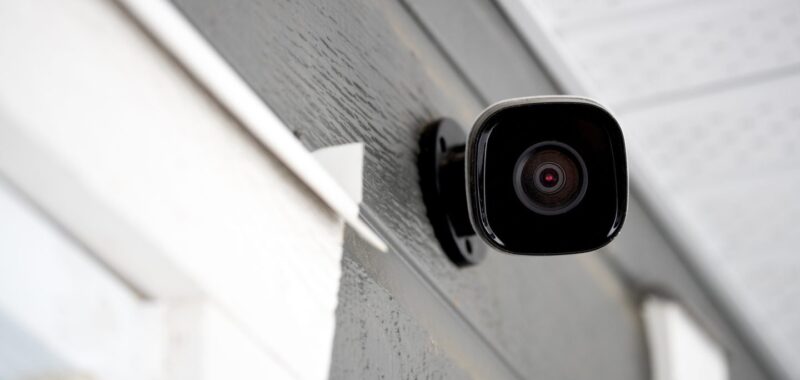Security camera installation is a key component of creating a strong security system. Cameras can alert you to and record suspicious activity, and they can even use lights or noise to deter intruders. But be sure to avoid common security camera installation mistakes that can damage your camera, reduce visibility or even create privacy issues with your family and neighbors.
You can install security cameras indoors or outdoors, and they can be plug-in, wireless or both. There are infinite options for security camera placement, depending on the layout of your home, but not all placements are created equal. Here are some common errors to avoid when installing security cameras.
Though the point of a security camera is to keep a closer eye on your property, there is such a thing as too much visibility. Cameras in places such as bedrooms and bathrooms can violate someone’s “reasonable expectation of privacy.” State laws differ, but in general, it’s illegal to record someone without their consent in these spaces.
The expectation of privacy also applies to cameras looking into a neighbor’s property, especially if they’re hidden or you don’t tell the neighbors you’re surveilling them. They might have the right to legal action if the camera points into areas with a reasonable expectation of privacy.
Though it likely won’t be an issue if some of your neighbor’s yard, for example, is visible from your outdoor camera, many camera providers, such as Ring, have a “privacy zone” feature that allows you to block out certain areas of the camera’s field of view.
2. Hiding the camera too much
It might seem like a good idea to install cameras facing a hard-to-see location such as a side alley or an upstairs window, but according to data from home security company ADT, most intruders enter through the front door, back door or an open first-floor window. It’s often most important to install cameras in view of those high-traffic areas.
Also, hard-to-see locations might have more obstructions, such as an AC unit or overhang, that partially block the view of the camera. Look out for fast-growing trees and bushes, too, that can eventually grow in front of the camera’s view field.
Hiding the cameras themselves may also be counter-productive: a 2013 study led by a researcher from the University of North Carolina at Charlotte Department of Criminal Justice and Criminology found that most intruders check to see if a home has cameras or other alarm technology before attempting a burglary.
3. Overexposure to heat, water and debris
The location of your security camera can make a big difference in its lifespan. Placing an electronic device in direct sunlight or near vents or heaters can damage the batteries or melt the adhesive if it’s a stick-on camera. Vents can also quickly cover your camera in dust or debris, reducing the visibility of the lens.
Also, only use designated outdoor cameras outside. Outdoor cameras have special features such as water resistance and durable construction so they can withstand the elements, and some, such as Blink, even offer weather-resistant plugs to connect to outdoor outlets.
4. Wrong motion detection range
Many security cameras use passive infrared technology to detect motion, which needs a specific distance range, angles and lighting to work properly. Detection range can vary by brand, but is typically around five to 20 feet from the camera.
Make sure to angle your camera down from above — some home security providers recommend installing security cameras at a height of around seven to 10 feet — for prime motion detection. Installing a security camera higher up can also prevent tampering. Angling up from below, on the other hand, may be more likely to trigger alerts for cars, birds or waving trees.
Also, don’t use an indoor camera to monitor outdoor areas through a window. The glass can block the infrared motion detection, and sun glare can throw off the camera’s view.
What is the average labor cost to install security cameras?
Do I need an electrician to install security cameras, or can I install my own security cameras?
Who would install security cameras?

